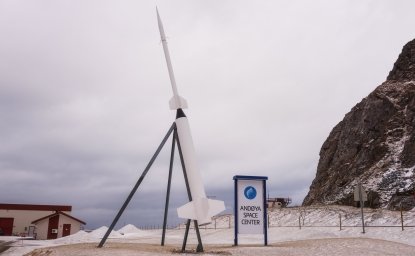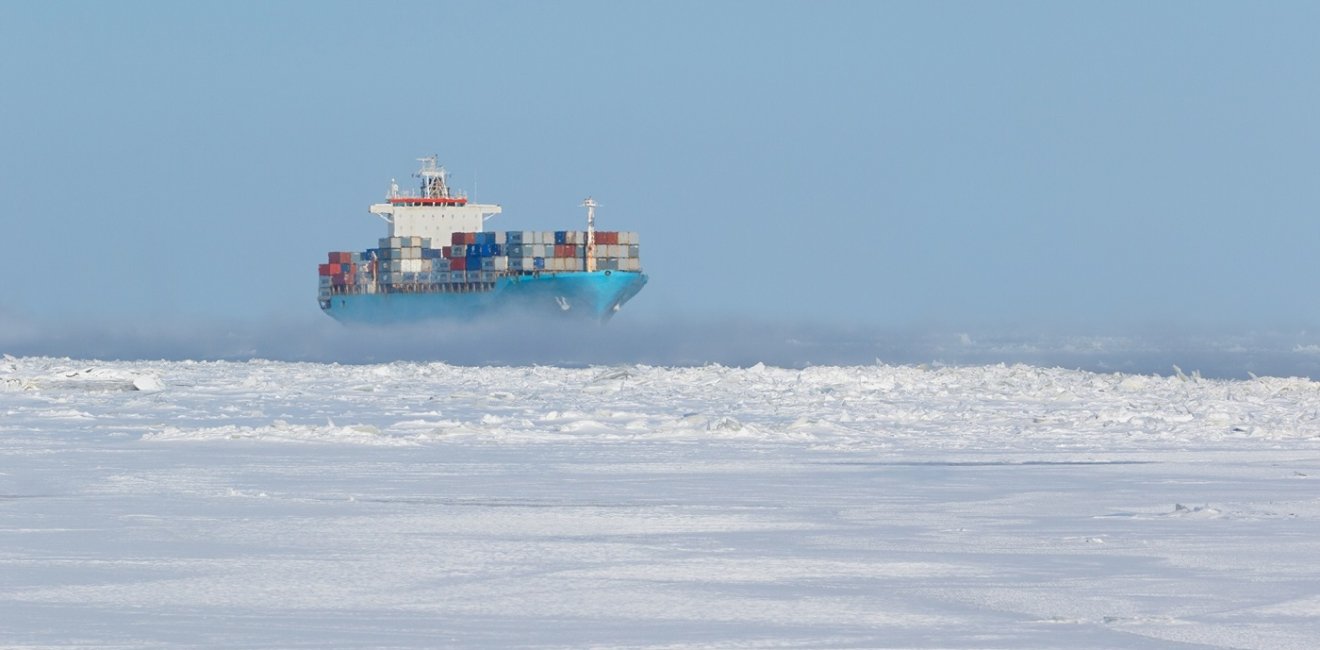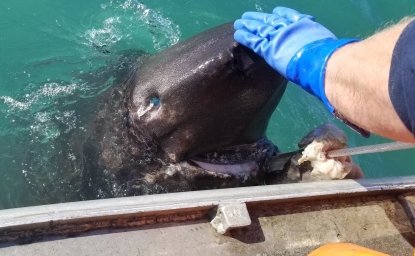
A blog of the Polar Institute
Shipping plays an important role in the Arctic, bringing resupply to communities (especially to coastal communities off the road system), enabling tourism, and potentially as a shorter route between Asia and Europe, but shipping also brings pollution to remote areas that would not be exposed to it any other way. A particularly troubling form of pollution for the Arctic is emissions of black carbon. Black carbon is a significant driver of climate change globally, second only to CO2, and the most active driver of warming in the Arctic—and ships traveling in or near the Arctic bring black carbon to the very place that is the most sensitive to its effects. Black carbon also presents a significant risk to human health, causing or exacerbating asthma and other respiratory diseases, and even remote communities may be exposed to this risk if they lie along heavily trafficked shipping routes.
Many large ships are burning the dirtiest (and cheapest) fuel on the planet, heavy fuel oil (HFO). Because HFO is at the end point of the refining process, it contains considerable toxic elements including heavy metals and sulfur. Also, the burning of HFO, and other marine fuels, can lead to a substantial amount of particulate matter being emitted into the atmosphere, a significant percentage of which is black carbon, or soot. Comprised of fine particulates (PM2.5), black carbon is a result of incomplete combustion of fossil fuels, biofuels, and biomass. For the Arctic, black carbon presents a particularly urgent problem, as it not only warms the atmosphere while in the air but also but also greatly accelerates the melting of snow and ice when it falls to land, decreasing the albedo of highly reflective surfaces.
The Arctic is suffering disproportionally from the effects of climate change, warming at nearly four times the rate as the rest of the globe. Melting snow and ice exposes the darker land and water underneath, resulting in even faster warming. Arctic warming is not only a disaster for Arctic Peoples' culture and subsistence, biodiversity, and infrastructure (through accelerated permafrost melt); in addition, since the Arctic serves as a kind of air conditioner for the rest of the planet, as the Arctic warms, the effects are felt globally.
The governing body for the global shipping industry is the International Maritime Organization (IMO), affiliated with the United Nations, and the IMO has been working on how to reduce the effects of black carbon in the Arctic for over a decade.
IMO’s Marine Environmental Protection Committee (MEPC) is tasked with regulating shipping’s various waste streams such as sewage, bilge water, and air emissions. A subcommittee under MEPC, Pollution Prevention and Response (PPR) is largely tasked with considering technical matters related to managing and/or reducing those waste streams. PPR also works on the development of guidelines for responding to discharges from accidents and emergencies, such as fuel oil spills. The PPR and MEPC have worked on a common definition of black carbon, standardized methods to measure black carbon emissions from ships, and developed recommendations on technical measures and policies to reduce black carbon.
The most recent meeting of the PPR subcommittee took place at IMO headquarters in London from February 19th through the 23rd, 2024. At PPR 11 there were two significant accomplishments:
- PPR finalized draft guidelines on recommendatory black carbon emission measurement, monitoring, and reporting. These guidelines, which will likely be adopted by MEPC 82 in October 2024 and be used thereafter, specify recommendations for measuring, monitoring, and reporting of black carbon emissions. The information reported under these guidelines will be used by the IMO to further consider development of recommendations and regulations to reduce the impact of black carbon emissions on the Arctic.
- Draft guidance on best practice on recommendatory goal-based control measures to reduce the impact on the Arctic of black carbon emissions from international shipping. This guidance is also expected to be adopted at MEPC 82 and contains a list of technology options which can be used by ships traveling through the Arctic to reduce black carbon emissions included as a table of "Technology options, measures, applicability and other considerations for Black Carbon emission reduction for existing ships". These are intended for informational purposes to illustrate the technical methods available in pursuing black carbon emissions reduction, but the guidance is not prescriptive, so other options may be available to operators.
These are important because they represent the culmination of two processes, one on monitoring, measurement, and reporting, and the other on recommended measures to reduce black carbon impacts on the Arctic, both of which are necessary steps toward a possible mandatory regulation on black carbon emission reduction.
In addition to the documents above, PPR 11 also requested the following actions from the MEPC:
- That the committee invite the International Organization for Standardization (ISO) to consider the development of a Polar fuel standard which may include the H/C ratio. The hydrogen to carbon ratio has been recently found to be a good predictor of how much black carbon a fuel might be expected to produce through normal engine operations. However, the H/C ratio is not a test that is normally done with fuel batches, and it’s relatively expensive. In addition, there is speculation that there are existing distillate fuel blends that already meet the criteria for a Polar fuel standard, and if ISO finds this to be the case, development of a new standard may not be necessary.
- MEPC also invited interested Member States and international organizations to conduct further research on the use of the H/C ratio or other indicators to characterize marine fuels and submit findings on the impact of fuel characteristics on the formation of Black Carbon emissions from international shipping to PPR 12.
- Finally, there was a request to the committee to invite interested Member States and international organizations to submit proposals to a future session on fuel characteristics which may impact Black Carbon formation.
Another development at the IMO likely to affect black carbon emissions in the Arctic are two proposals to establish Emission Control Areas (ECAs) submitted to MEPC 81. Both Canada and Norway are seeking to establish ECAs within the Arctic waters of their Exclusive Economic Zones (EEZs) which stretch two hundred miles offshore from their coastlines. Like most ECAs established in other areas, for example, the North American or Mediterranean ECAs, the new proposals are primarily designed to reduce emissions of sulfur oxides and nitrogen oxides, which are harmful to human health and significant climate forcers. However, measures to reduce SOX and NOX also have the benefit of reducing particulate matter, of which black carbon is a primary component. While the Norwegian proposal doesn’t list particulate matter reduction as a goal, it does provide data on the reductions that might be expected when the ECS goes into force. The Canadian ECA proposal does list particulate matter, as well as NOX and SOX, reductions as a stated target.
While governments and international bodies work to put measures into place to slow and hopefully halt anthropogenic planetary warming, the search for near- term measures that will have a beneficial effect becomes increasingly urgent. It is very easy to argue that the measure that could have the most profound impact will be to keep the Arctic frozen so that it can continue its role as a global climate regulator. Because short term climate forcers cycle out of the atmosphere so quickly, particularly black carbon, steps today to reduce and eliminate black carbon emissions in the Arctic will likely have more near term impact than any other measure we might undertake. For this reason, work to reduce the impact of black carbon on the Arctic will continue to receive close attention from member states and organizations at the IMO.
Author


Polar Institute
Since its inception in 2017, the Polar Institute has become a premier forum for discussion and policy analysis of Arctic and Antarctic issues, and is known in Washington, DC and elsewhere as the Arctic Public Square. The Institute holistically studies the central policy issues facing these regions—with an emphasis on Arctic governance, climate change, economic development, scientific research, security, and Indigenous communities—and communicates trusted analysis to policymakers and other stakeholders. Read more

Explore More in Polar Points
Browse Polar Points
Greenland’s New Governing Coalition Signals Consensus

Fulbright Arctic Initiative IV Scholar at the Polar Institute


